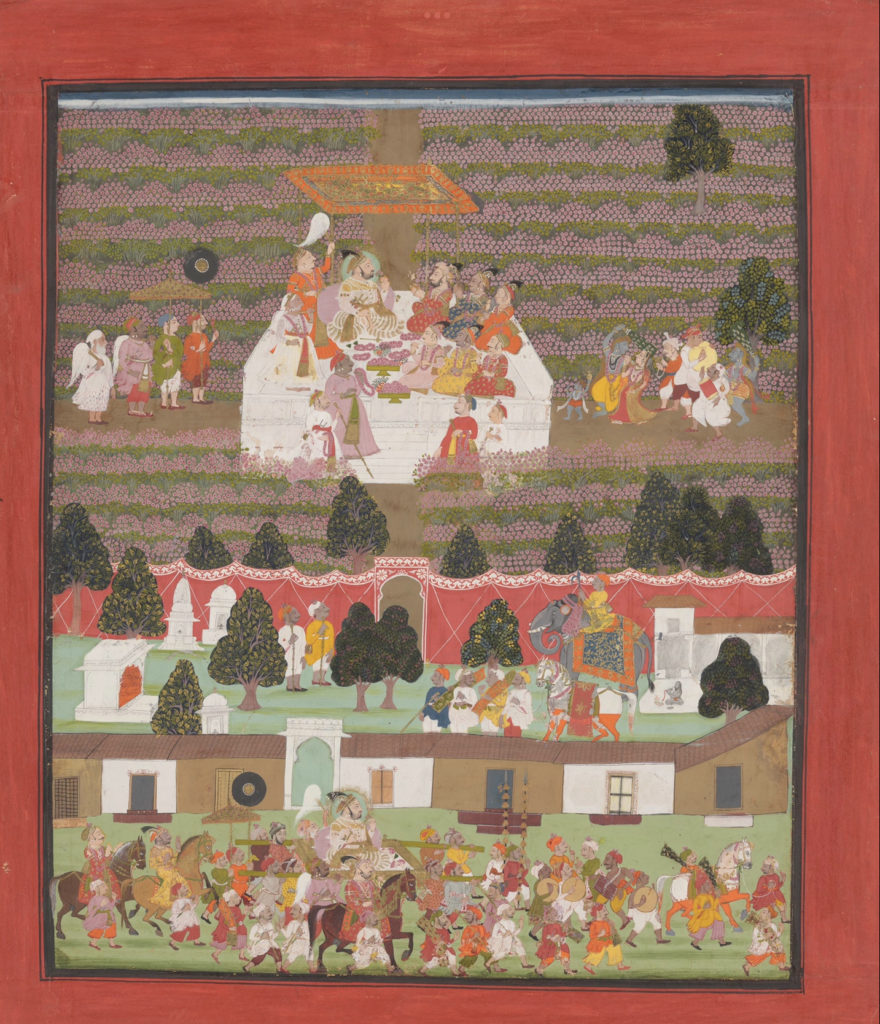The digital exhibition had been introduced to the cultural heritage scene before the pandemic, but since Spring 2020, it’s here to stay, in part because of the accessibility of the form and in part, because increased familiarity with digital curation has allowed students, independent researchers, and others to partake in carefully bringing together objects and pairing them with one another. However, very few, if any, have tackled a digital exhibition exploring scent. That’s the challenge the curators of Bagh-e Hind, Bharti Lalwani and Nicolas Roth, have set themselves. The exhibition explores 17th and 18th century India through both the lens of scent and the garden: each exhibition room is based around either rose, narcissus, smoke, iris, or kewra, featuring not only paintings where the scent is part of what is being communicated, but poetry in translation, other objects related to those scents, and the curators’ notes, so we can follow along behind the scenes.
As Bagh-e Hind represents the collaboration between an academic and a perfumer (who is also an art critic), it sits nicely at the nexus of the communities Hazine is trying to cater to. Beyond simply documenting the curation of such an exhibition, there’s also something intriguing about the history of olfaction, which is often thought of as elusive: yet, Lalwani and Roth bring together multiple wells of knowledge to allow us to smell the past and challenge our ways of knowing.
Continue reading “Translating Mughal Paintings into Scents: An Interview with the Curators of Bagh-e Hind, Bharti Lalwani and Nicolas Roth”
